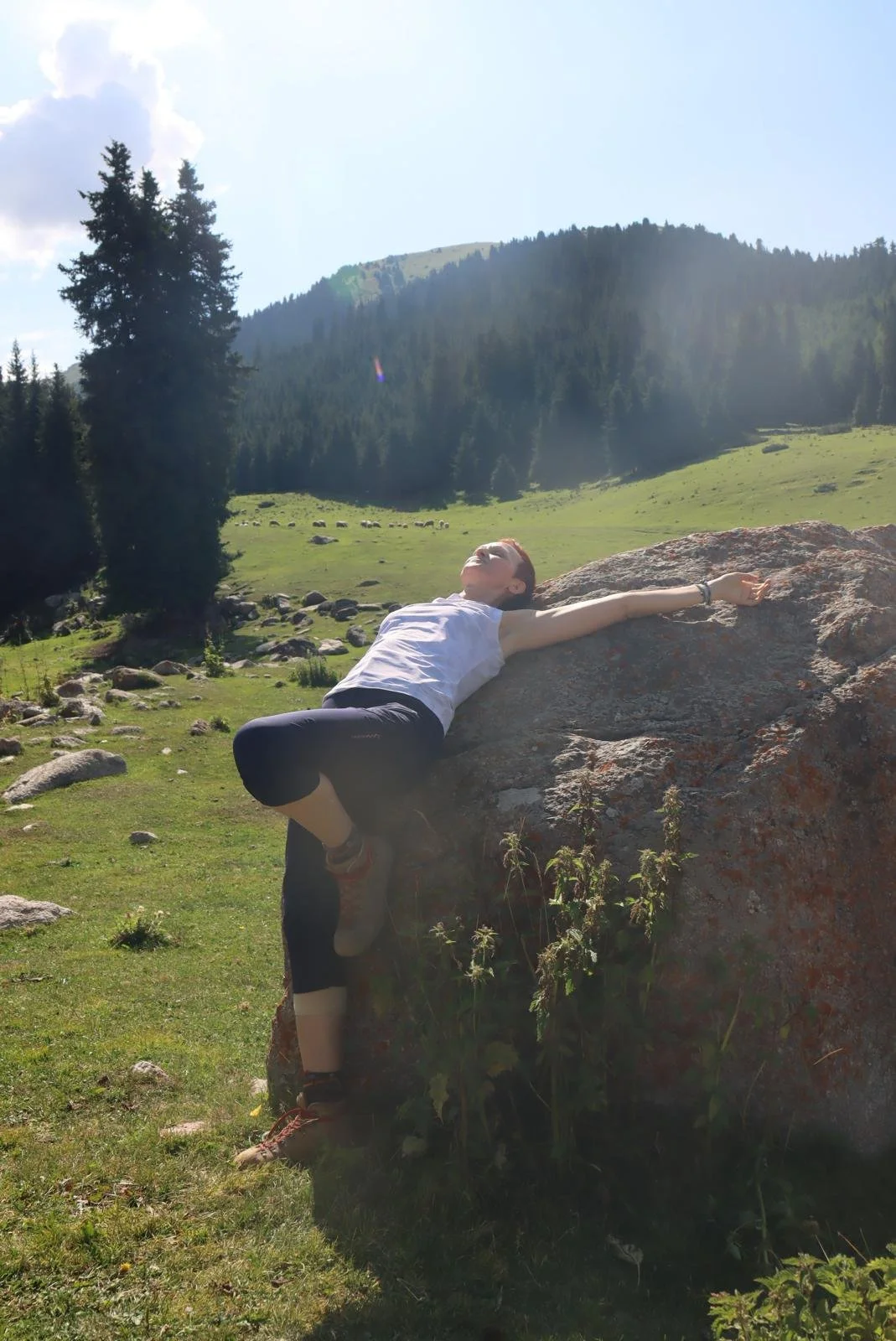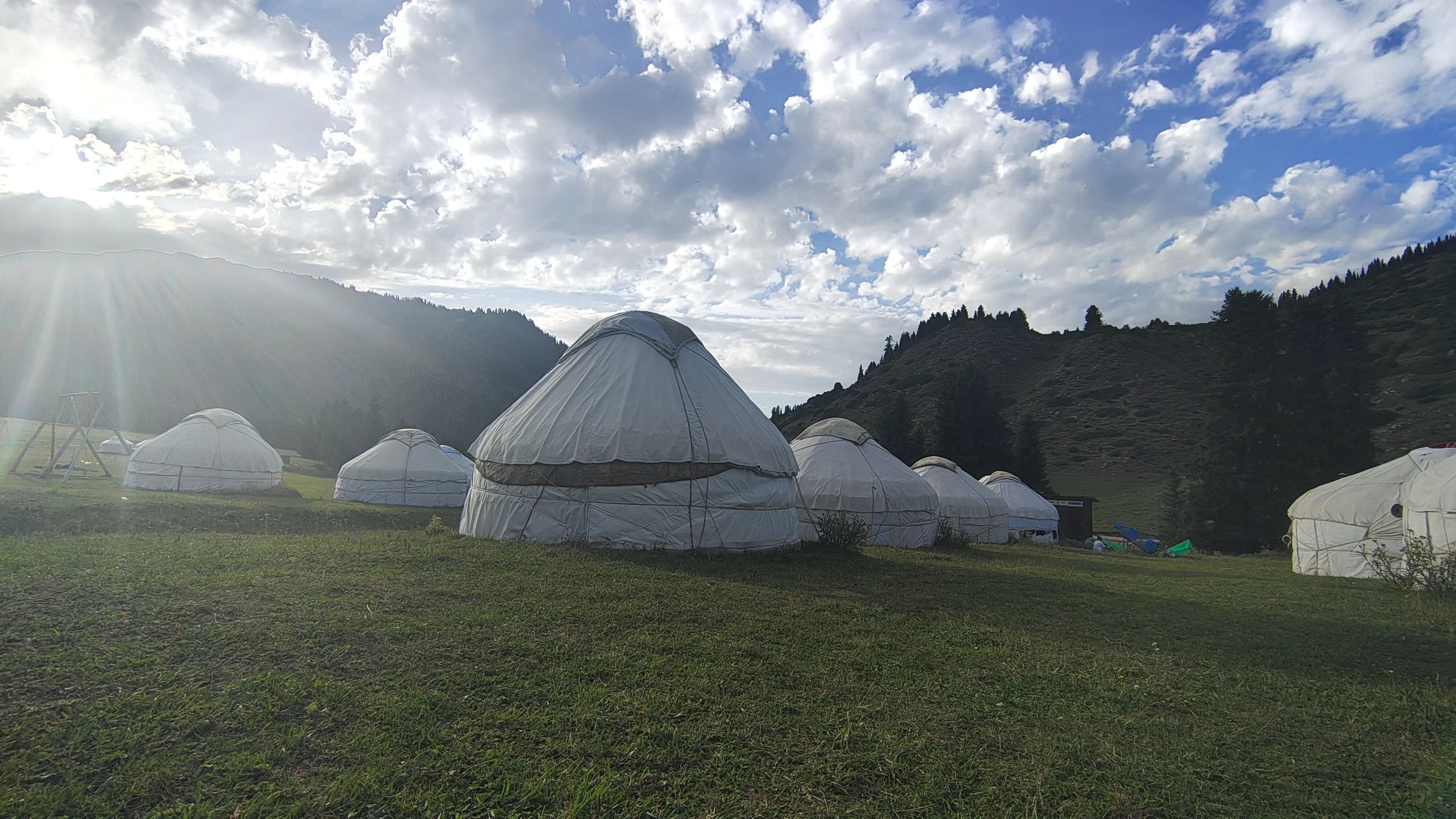The Strength of Community: the emotional power of belonging. Reflections from the Nomadic Kyrgyzstan
I’ve just returned from the mountains of Kyrgyzstan, where I spent time living alongside some nomadic communities for a few days —. There, among the vast skies, grazing animals, and circular tents, I was reminded of something deep and human — something so simple yet almost forgotten in modern life: the profound nourishment of community.
This blog isn’t about travel. It’s about coming home to something many of us haven’t even realized we’ve lost. In those highlands, far from the noise and rush of the world I’m used to, I found emotional spaciousness — not through solitude, but through togetherness. I saw how being in community can soften the edges of our inner lives. How being witnessed, needed, and held can return us to ourselves.
The Nomadic Way: Interdependence as a Way of Being
In the nomadic life, nothing is truly done alone. Meals are prepared together, stories are shared by the fire, labor is collective, and presence is natural — not performative. I watched as neighbors flowed in and out of each other’s lives like rivers merging and separating. Children wandered freely between yurts. Elders rested in the sun, their wisdom not spoken loudly but felt in the air. Everyone had a place, not because they earned it, but because they belonged.
There was no question of “what do you do?” or “how do you contribute?” It was simply understood: you are part of us. You matter because you’re here.
That way of living did something to my nervous system. It slowed me down. It unclenched something inside. We hold the idea that be independent is be stronger but the nomads showed me a different kind of strength: the strength of being woven into the fabric of a group, of showing up for others and letting them show up for you.
Community as Emotional Grounding
What surprised me most wasn’t just the strength of the nomadic community — it was how quickly we, the small group I traveled with, became a kind of family of our own. We came from different countries, different lives, different languages — and yet, something quiet and strong formed between us as we journeyed through unfamiliar terrain.
We held space for each other in moments of awe, exhaustion, and reflection. Someone always had a hand on your back when the road got steep. Meals were shared, laughter came easily, and silence was respected. There was no pressure to be anything other than what you were in the moment. I felt held — not just physically when the path was rocky, but emotionally, in the subtler ways that really matter.
Between the nomads and our small traveling circle, I witnessed how community can ground us emotionally — in ways we often don’t find in our individual lives. In community:
Golden yurt camp at 2400 mt
Grief doesn’t have to be carried alone.
Joy becomes more vivid because it’s witnessed.
Vulnerability is safe, not shameful.
Silence isn’t emptiness — it’s shared presence.
In those moments, I understood something in my body, not just my mind: We are not meant to do this life alone. No matter how “strong” or “independent” we are told to be, we all long — deeply — to be seen, to be felt, and to belong.
Nature is the greatest teacher of interconnectedness, showing us that survival depends on the delicate balance of relationships between all living things. Here’s how it teaches us this vital lesson:
1. Ecosystems Depend on CooperationThe Loss of Community in Modern Life
2. Biodiversity Strengthens Resilience A diverse ecosystem (like a coral reef or rainforest) can withstand diseases, climate shocks, and invasions better than a monoculture.
3.Human Survival Relies on Nature’s Balance Clean air, water, and fertile soil depend on healthy ecosystems. Deforestation or pollution in one region can trigger global climate crises.
4, Symbiosis Over Competition Nature favors mutualism over pure competition.
Survival isn’t just about the "fittest"—it’s about the most adaptable together
Modern societies often prioritize individualism, but nature proves that true resilience comes from connection. Whether in communities, economies, or environmental policies, we thrive when we recognize our interdependence—just like every thread in nature’s web
The Loss of Community in Modern Life
Coming back from Kyrgyzstan, I noticed a kind of a tender sadness I couldn’t name at first. The contrast between life in community and life in the modern world felt stark. In cities and digital spaces, we’re surrounded by people, yet so often alone. We scroll endlessly, respond with quick reactions, and make plans that rarely go deeper than surface connection. We’ve mistaken proximity for intimacy, and busyness for belonging.
There’s a kind of emotional fatigue that comes from always holding it together on your own — from believing that self-reliance is the only way to survive. But after living in two communities — one ancient and rooted in tradition, the other temporary and beautifully improvised — I d say that that emotional resilience doesn’t have to come from isolation. It can come from being held.
Community — real, heart-centered community — reminds us that vulnerability is human. That we don’t need to perform or prove. That being with each other is not a distraction from healing, but the very ground where healing happens.
And maybe that’s what I felt returning home: the ache of disconnection we’ve normalized. The quiet epidemic of loneliness behind our polished images and curated lives. And at the same time, I felt something else — a quiet knowing that another way is possible. That we can remember how to come back to each other.
Community as a Practice
Community isn’t just a place or a group of people — it’s a practice. It’s something we can choose, nurture, and show up for, even in small ways. What I witnessed in Kyrgyzstan wasn’t just the result of tradition or geography — it was built, moment by moment, through presence, care, and consistency. The same was true in our traveling group: the shared support didn’t happen by accident; it came through conscious connection.
As our teacher says :You don’t have to live in the mountains or travel with strangers to experience this. You can begin where you are.
In a world that often tells us to go it alone, choosing community is a radical act. It’s also a deeply human one.and not easy for everyone
Community Is the Future
What I felt in the highlands of Kyrgyzstan — and within the circle of strangers who became companions —was a return to something ancient and essential: our deep human need to belong, to be seen, to be part of something greater than ourselves.
The world can feel fragmented, overwhelming, and isolating. But community reminds us that we are not just individuals navigating chaos — we are threads in a larger tapestry. And when those threads are woven with care, we create something stronger, warmer, and more enduring than anything we could build alone.
The next Buddha may take the form of a community — a community practicing understanding and loving-kindness.”Thich Nhat Hanh :“
This feels true to me. The future isn’t in one leader or one answer. It’s in the MWE. – as D Siegel states, in the meals we share, the hands we hold, the stories we carry for one another. ( IntraConnected: MWe (Me + We) as the Integration of Self, Identity, and Belonging - Dr. Dan Siegel )
May we choose community, again and again — not as an escape from ourselves, but as a path back to ourselves
REFLECTIONS
When did you stop trusting others with our rawness?
When did you decide that to feel deeply, or to need each other, was weakness?
How can nature support you in building your sense of Community?
what does prevent you from being with the Community ?
I ‘be very happy to receive your feedback and comment !!!!
Do you feel there is something you’d like to dive deeper in order to improve your self -confidence and sense of selfworthiness in personal and professional life but you don’t know how to approach that ? let s “get in touch” and enjoy a free coaching call by pressing the button here below
You ll also get a discount of 10% on your cycle of 3 coaching or mentoring sessions











